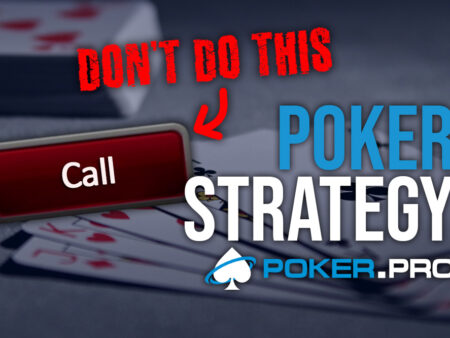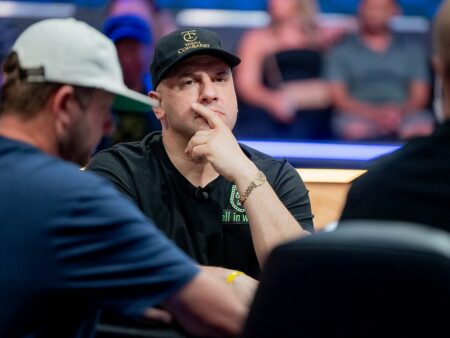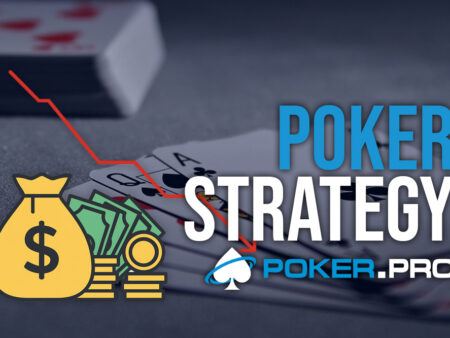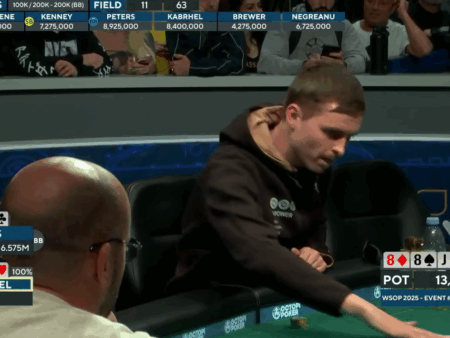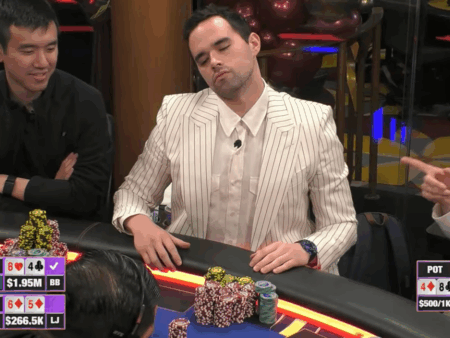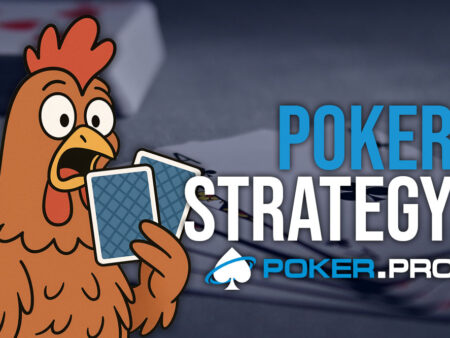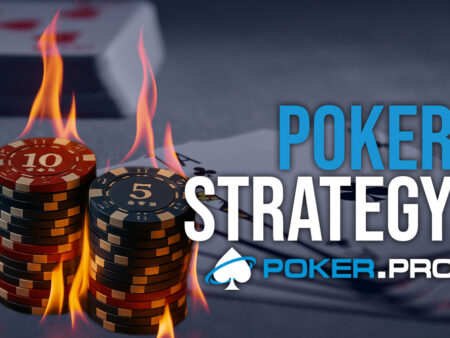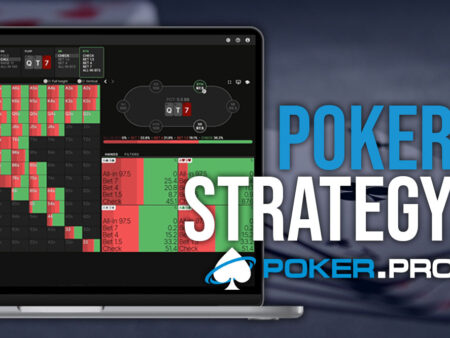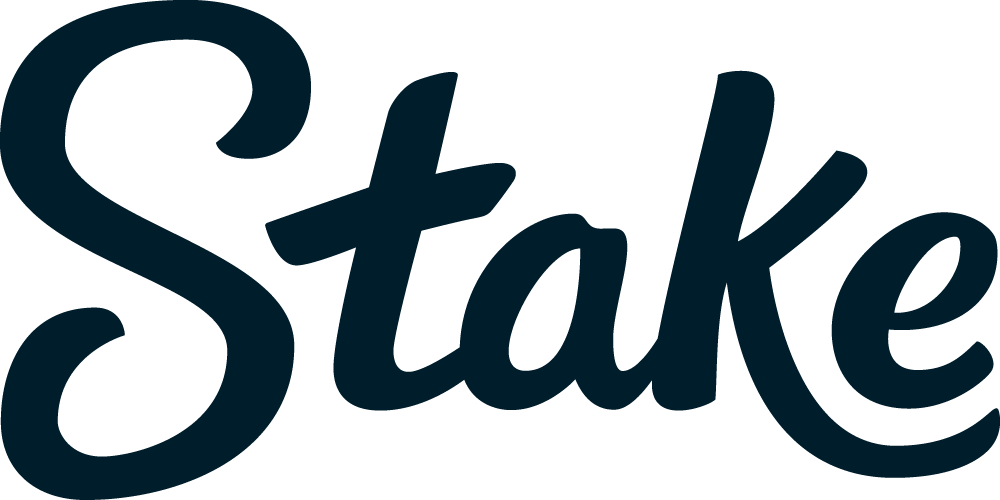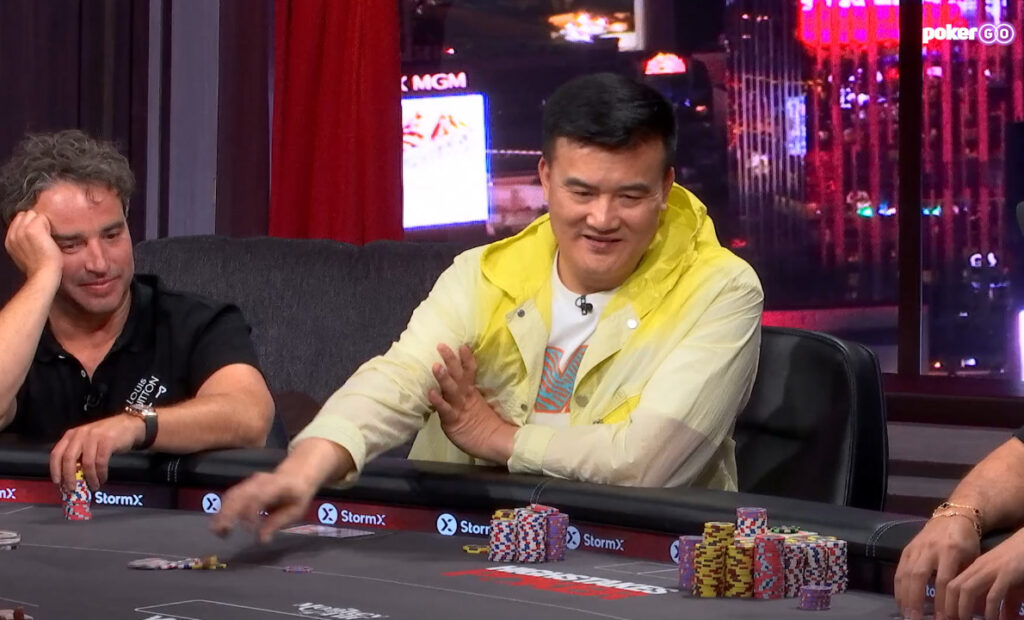
In this High Stakes Poker hand breakdown, all eyes are on Peter as we analyze a common mistake many players make, which is overvaluing their draws. This often happens when the draw is combined with something else, like a pair or a combo draw, giving a false sense of strength. But unless we’re drawing to the nuts, we may even be drawing dead. The other problem is that we are almost never ahead, so it is essential to understand what we are paying and what we are getting, as well as the price-to-value ratio in economics or pot odds in poker.
- Read more: Hand Breakdown: Peter Gets Better of Airball on a Fortunate River for $842,500
- Read more: Hand Breakdown: Alan Keating Crushes Peter’s Soul in a $911,000 Pot
The hand started with Vinny limping ($1,000) with J♥J♦, Salomon raising to $10,000 with A♥Q♥, Peter cold-calling with 10♣8♦, Vinny re-raising to $25,000, and we got two calls. The pot was $77,000.
The problem with Vinny’s limp is that his hand is vulnerable, especially if there are a lot of players in the pot, as pocket jacks don’t play well multiway, as there are just a few boards where he will have high equity. Salomon’s raise is fine, but Peter’s call is awful as he is out of position and has a weak hand calling into the strong range of Salomon. Once Vinny re-raises, Salomon has a good hand and can call, but Peter should snap fold instead of making another mistake by calling.
The flop came 8♥7♠3♣, and this is one of the boards where Peter will lose a lot of money on average, as he has to call possibly two streets against ranges that are full of overpairs.
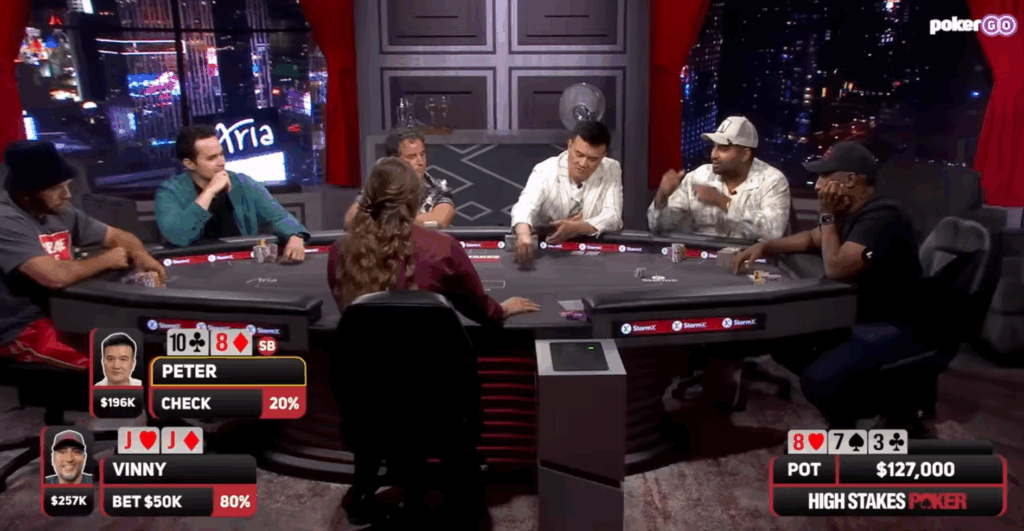
Peter checked, Vinny went for a big bet of $50,000 which seems good as he wants to put the pressure on hands he is ahead but can outdraw him like AQ, AQs, AK, AKs, KQ, KQs, QTs and also wants to get value from hands that have to call but he is ahead like TT, 99, T9s, 56s or some combos of 8x like A8s. Salomon recognizes that he is against strong hand and that it would be hard for him to relize his equity so he did the correct fold, but Peter is forced to call as his preflop action is a big mistake and he can’t call preflop and than fold when he hits top pair with a backdoor, but his call on the flop is not thrilling play. The pot is at $177,000.
The turn was 9♣ and it gave Peter a falls sense that his hand improved as he got open-ended straight draw with his second pair, but in reality his equity dropped from 20 percent to 18 percent and Stack to Pot ratio is close to one, indicating that his opponent has a natural shove on the turn.
Peter checked, and Vinny shoved as expected, and Peter should recognize that having 10♣ reduces the number of bluffs his opponent could have, like A♣10♣ and is mostly leaning towards made value hands, which all beat a pair of eights, so basically Peter has open-ender with two more outs (8♣, 8♠). For this call to be break-even, Peter has to have more than 31 percent of equity, making him 13 percent short, and this call will lose close to $61,000 on average.
Peter made the call, they ran it twice, and he missed the river on both runouts. It should also be added that Vinny’s postflop play with pocket jacks was much better than his preflop play, as he managed to push in all the money before any scary cards came (used good sizing on the flop to push out of the hand overcard floats).

The way things are looking for Peter, his live cash game graph might go from positive to big negative sooner than we expected if he continues making these kinds of plays and his luck doesn’t save him.
Lesson: Preflop mistakes can lead to even bigger mistakes post-flop. Learn the preflop play and think about pot odds in spots where there is no more play, and you have to call or fold.

